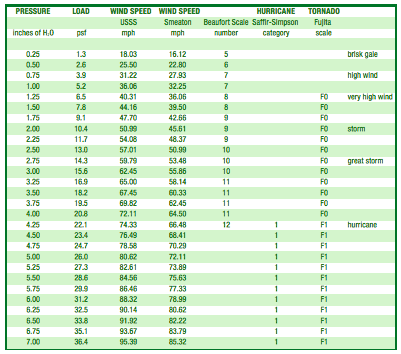In the realm of structural engineering and design, wind poses a significant and often underestimated hazard.
From towering skyscrapers to humble residential homes, buildings of all sizes and types are vulnerable to the destructive power of wind, particularly in regions prone to severe weather events. Understanding and mitigating this risk is paramount to ensuring the safety and resilience of our built environment.
Keep reading to learn the critical role that structural testing plays in safeguarding buildings against wind-induced damage.
Focus On: Wind-Based Hazards
Wind-based hazards encompass a spectrum of threats posed by the relentless force of wind. Understanding the nuances of these hazards is crucial for architects, engineers, and stakeholders involved in building design and construction.
Types of wind-based hazards include:
- Windborne Debris: This involves projectiles, carried by strong gusts, which pose a threat to buildings and infrastructure, capable of shattering windows, puncturing walls, and causing extensive damage upon impact.
- Wind Uplift: This manifests as an upward force exerted by wind on roofs and other horizontal surfaces. It can lead to roof displacement, detachment, or even failure, compromising the integrity of the entire structure and exposing occupants to heightened risks.
- Wind-Driven Rain: This occurs when strong winds propel rainwater horizontally, breaching building envelopes and infiltrating interior spaces.
- Wind-Induced Vibrations: These can compromise occupant comfort, trigger fatigue in building materials, and potentially escalate into structural failure under prolonged exposure.
Importance of Structural Testing for Wind Hazards
Structural testing serves as a crucial mechanism for evaluating the resilience of buildings and infrastructure against the formidable forces of wind, ultimately, safeguarding lives, property, and investments.
At NGC Testing Services, we duplicate some of these wind hazards through ASTM E330, ASTM E72, and ANSI FM 4474 to see how building assemblies and materials resist damage from high winds.
The adjacent table gives examples of wind and pressure rates and the havoc wind can create. The Saffir-Simpson Hurricane Wind Scale, for example, estimates potential hurricane damage based on sustained wind speed, with a rating of 1 to 5 (5 being severe catastrophe likely).

Click here to view the full chart.
Get Full-Scale Structural Testing With NGC Testing Services
NGC Testing Services boasts facilities specifically designed to facilitate comprehensive structural testing of wind-based hazards.
Our facilities feature a roof uplift load apparatus on site for evaluating roof membrane attachment, as well as a large area for special test setups. This enables the evaluation of building materials and exterior envelope assemblies of different sizes, shapes, and configurations under controlled wind loads.
All in all, the NGC Testing Services team is well-equipped to conduct thorough and insightful structural testing, providing valuable insights into building resilience and safety against wind hazards.
For more information about our structural testing services, reach out to our team of testing pros.
Editor's Note: This blog was originally written and published by Bob Menchetti on August 30, 2014.
Search blog articles
Browse by topic
Subscribe for updates
GET IN TOUCH
Contact Us
NGC Testing Services features one of North America's most comprehensive and unique fully accredited testing facilities. Contact us today to visit our 50,000-plus-square-foot facility located in Buffalo, New York.
